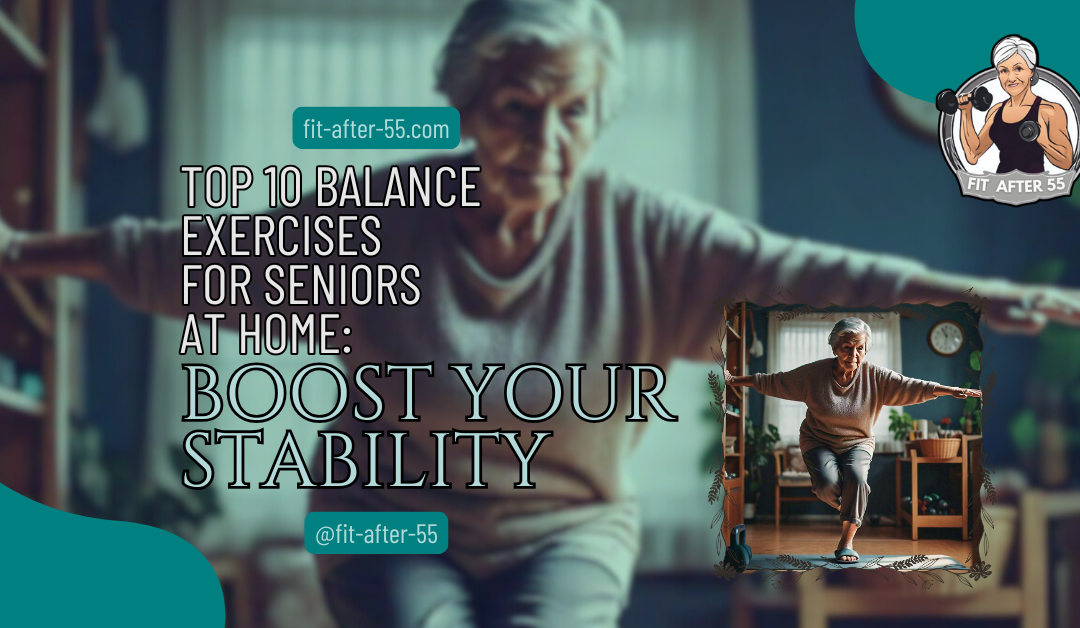Balance exercises for seniors at home are a fantastic way to maintain physical fitness, improve health, and enhance overall well-being. As a senior who has personally benefited from these exercises, I can attest to their effectiveness. Let’s explore a variety of simple yet powerful exercises that you can easily incorporate into your daily routine, right in the comfort of your own home.
Top 10 Balance Exercises for Seniors at Home: Boost Your Stability and Confidence
Staying steady on your feet is key for seniors. As you age, your balance can get worse, which might lead to falls. But don’t worry! You can improve your balance with simple exercises at home.

Doing balance exercises regularly can help you stay active and lower your risk of falls. These exercises are easy to do and don’t need any special equipment. You can do them in your living room or backyard.
We’ve put together a list of the top 10 balance exercises for seniors. These moves will help you feel more stable and confident. They range from simple leg lifts to tightrope walks. You’ll find something that works for you, no matter your fitness level.
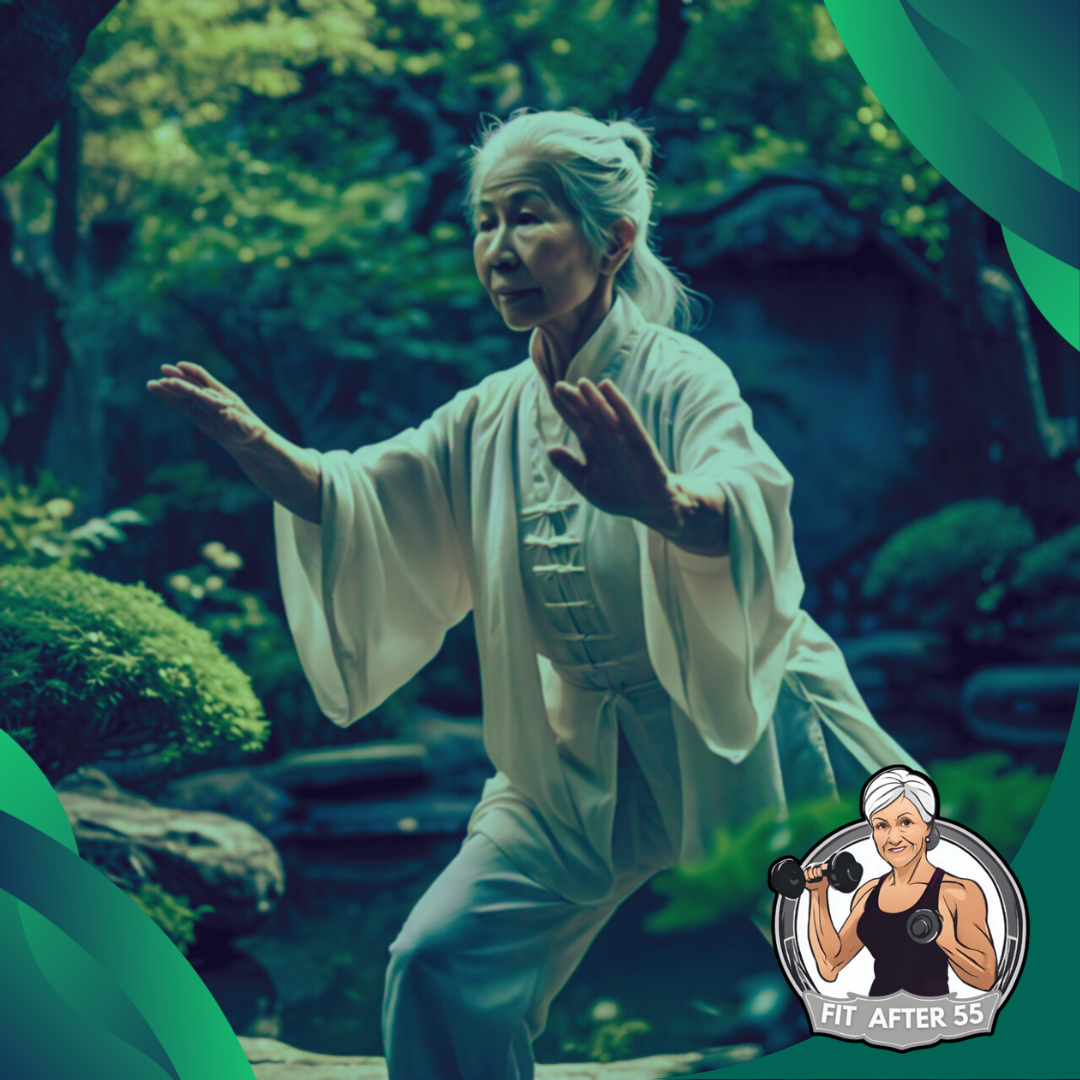
Key Takeaways
- Balance exercises can help you stay steady and prevent falls
- You can do these exercises at home without special equipment
- Regular practice can boost your confidence and keep you active
The Importance of Balance Training for Seniors
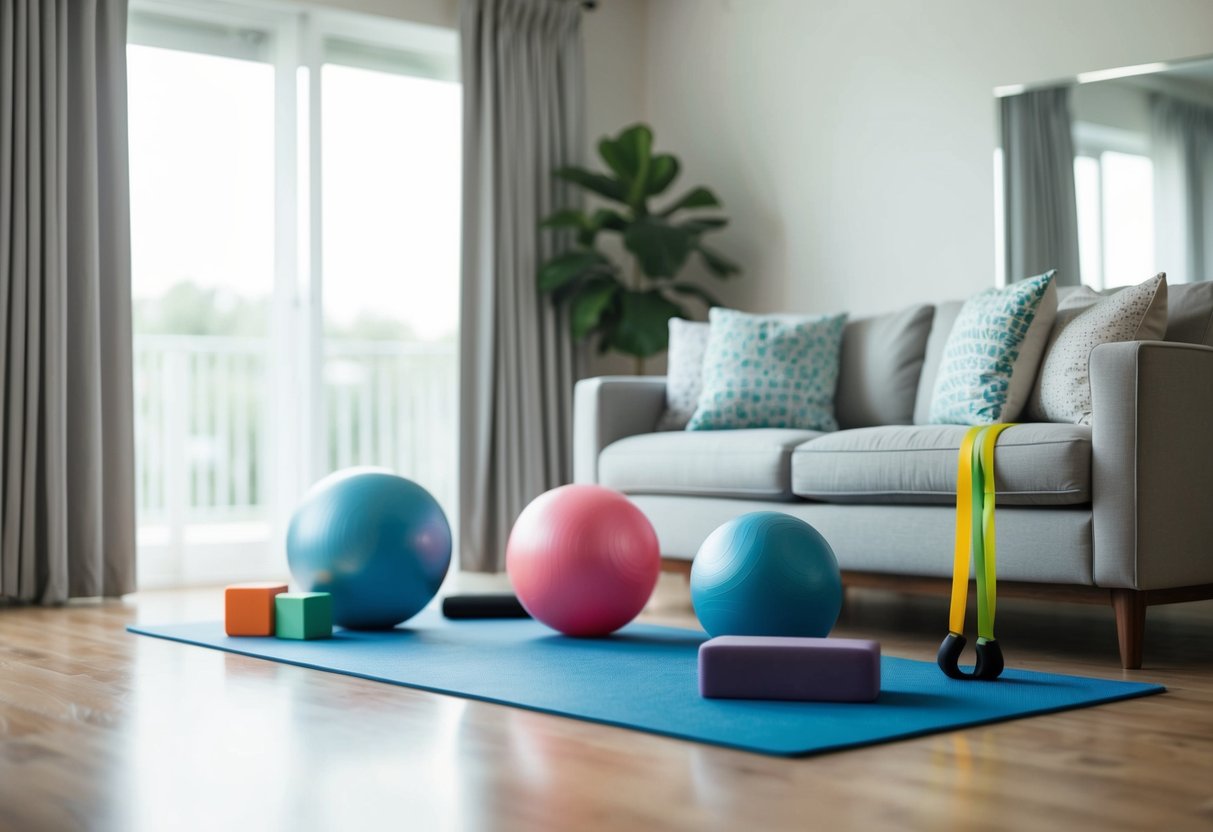
Balance exercises are key for your health as you age. They help you stay steady on your feet and avoid falls.
As you get older, your balance can get worse. This makes it easier to trip or lose your footing. But don’t worry! You can improve your balance with practice.
Balance training is a fun way to boost your fitness. It makes daily tasks easier and safer. Things like walking, climbing stairs, or getting out of a chair become less risky.
Here’s why balance exercises matter for you:
- They help prevent falls
- You’ll feel more confident moving around
- Your muscles get stronger
- It’s easier to stay active and independent
Falls can be scary and harmful. They might lead to broken bones or other injuries. By working on your balance, you lower your risk of falling.
Balance training isn’t just good for your body. It’s great for your mind too! You’ll feel proud as you get better at the exercises. This can lift your mood and outlook on life.
Your quality of life can improve with better balance. You’ll be able to do more things on your own. This freedom is priceless as you age.
Remember, it’s never too late to start! Even small amounts of balance practice can make a big difference in your life. Stay safe and have fun with your balance exercises!
Understanding Balance and Its Components
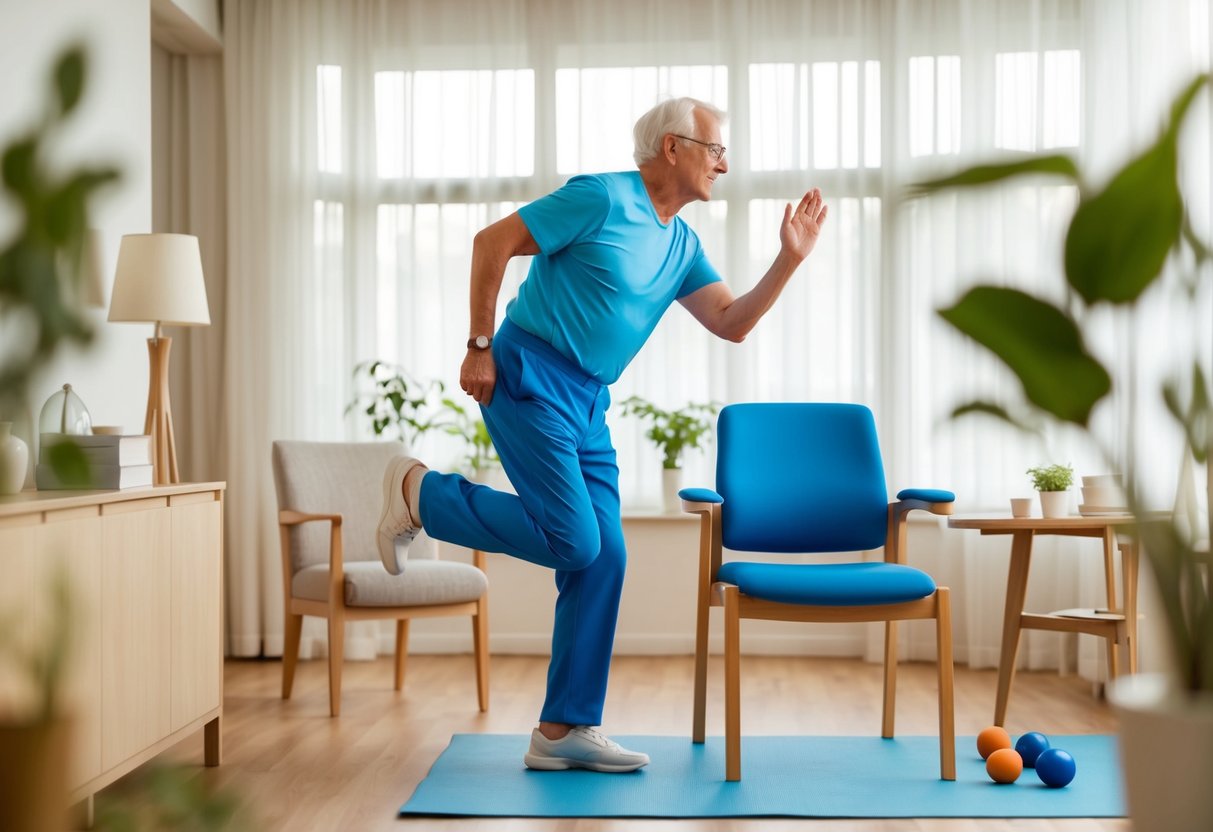
Balance is key for staying steady on your feet. It involves different parts of your body working together. Let’s look at what makes up good balance.
Coordination and Stability
Your brain and body need to work as a team for good balance. This teamwork is called coordination. It helps you stay stable when you move or stand still.
Your eyes, inner ears, and body sensors all play a part. They send info to your brain about where you are. Your brain then tells your muscles what to do to keep you upright.
As you get older, these systems may not work as well. That’s why balance exercises for seniors are so important. They help keep your coordination sharp.
Muscle Strength and Core Muscles
Strong muscles are vital for good balance. Your legs need to be strong to hold you up. But did you know your core muscles are just as important?
Your core includes the muscles in your belly, back, and sides. These muscles work hard to keep your body stable. When your core is strong, you’re less likely to wobble or fall.
Exercises that target your core can really help your balance. Simple moves like standing on one leg can make a big difference. They make your core work harder to keep you steady.
Remember, it’s never too late to start working on your balance. Even small steps can lead to big improvements in how steady you feel on your feet.
Warm-Up Exercises for Safety and Effectiveness

Preparing your body before balance exercises is key. Warm-ups improve flexibility and get your muscles ready for activity. They help prevent injury and make your workout more effective.
Gentle Stretching
Start with easy stretches to wake up your muscles. March in place to get your blood flowing. Lift your knees high and swing your arms. This simple move preps your whole body.
Next, try shoulder squeezes. Stand tall and pull your elbows back. Squeeze your shoulder blades together. This helps your upper body posture.
For your legs, do a gentle hamstring stretch. Sit down and extend one leg. Lean forward slightly until you feel a mild pull. Hold for 10-20 seconds. Repeat on both sides.
Remember to breathe deeply during these stretches. If anything hurts, stop and talk to your doctor.
Mobility Enhancement
Now, let’s work on your range of motion. Try arm circles. Stand with your arms out to the sides. Make small circles, then gradually make them bigger.
Weight shifts are great for balance. Stand with your feet hip-width apart. Slowly shift your weight to one foot, then the other.
Ankle rotations help too. Sit down and lift one foot. Draw circles with your toes. Go both ways, then switch feet.
These moves boost your mobility. They prepare your joints for more challenging exercises. Always move slowly and carefully. If you feel unsteady, use a chair for support.
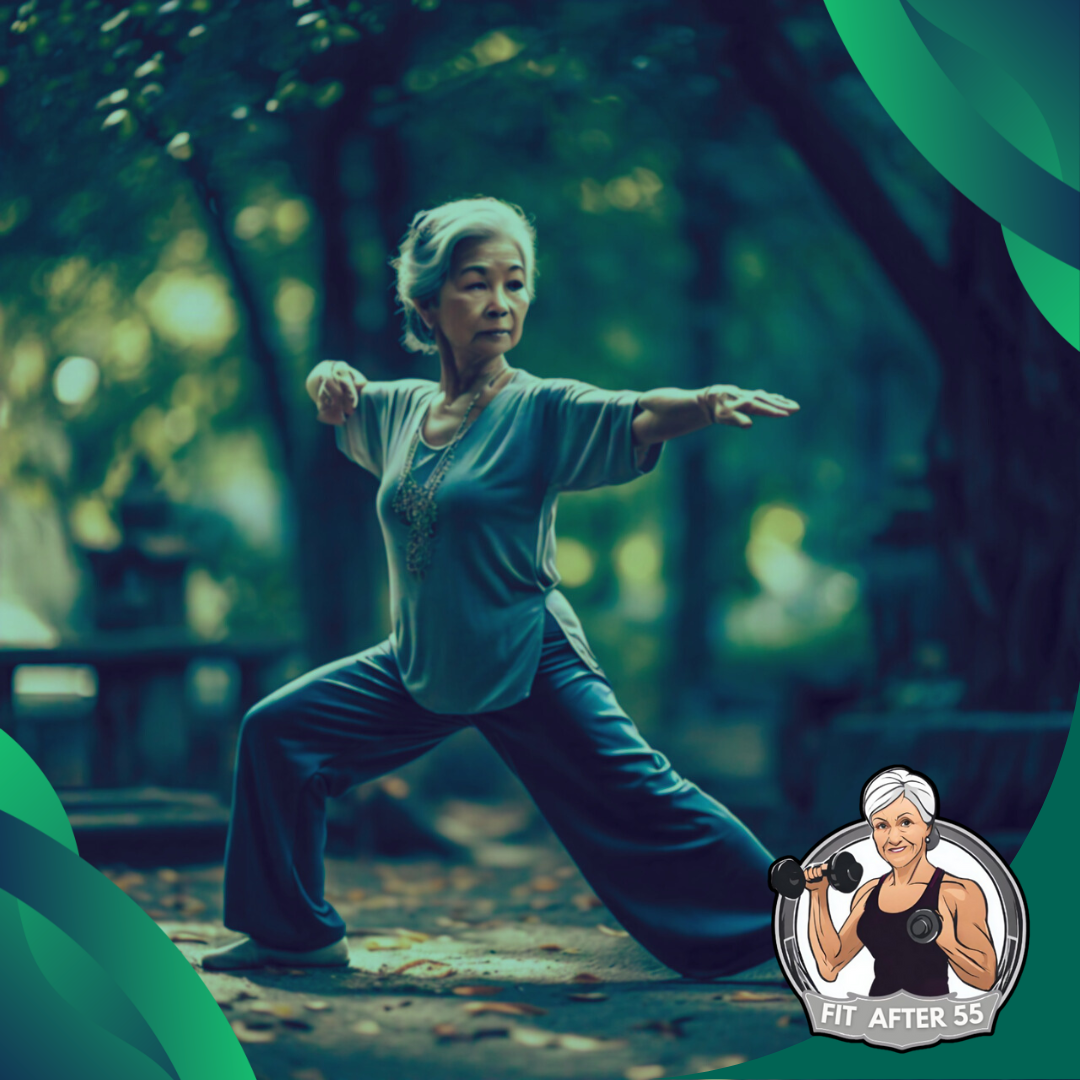
Top 10 Balance Exercises to Do at Home
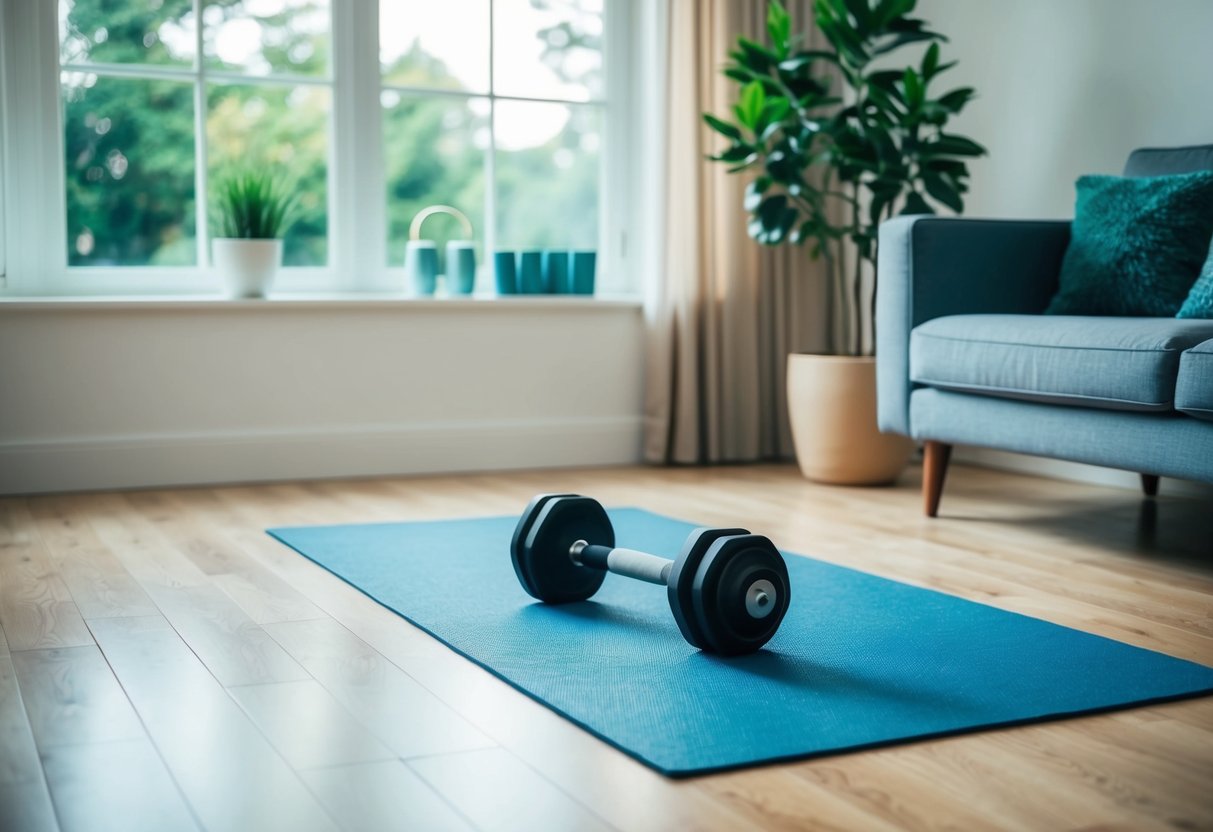
These exercises can help you improve stability and prevent falls. They’re simple to do in your own home without special equipment.

Single-Leg Stands
Single-leg stance is a great way to start improving your balance. Stand behind a chair and hold onto it for support. Lift one foot off the ground and try to balance on the other leg.
Hold this position for 10-30 seconds, depending on your ability. Switch legs and repeat. As you get better, try to let go of the chair.
Do this exercise 3 times on each leg. It strengthens your ankle, knee, and hip muscles.
Remember to keep your core engaged and look straight ahead. If you feel unsteady, grab the chair for support.
Heel-To-Toe Walk
The heel-to-toe walk mimics walking on a tightrope. It’s excellent for improving your balance and coordination.
Find a clear path in your home. Place the heel of one foot directly in front of the toes of your other foot. Your heel and toes should touch or almost touch.
Take 10-20 steps like this, moving slowly and steadily. Keep your eyes fixed on a point in front of you to help maintain balance.
If needed, walk alongside a wall or countertop for support. As you improve, try it without support.
Rock the Boat
This exercise helps you feel more stable when standing still. Start by standing with your feet hip-width apart.
Lift your arms out to the sides at shoulder height. This helps you balance. Shift your weight to your right foot and slowly lift your left foot off the floor.
Hold for 30 seconds, then slowly lower your foot. Switch sides and repeat. Do this 5-10 times on each side.
Remember to keep your core tight and breathe steadily. If you feel wobbly, put your foot down and start again.
Flamingo Stand
The flamingo stand is similar to single-leg stands but adds arm movements for extra challenge. Stand on one leg, lifting the other foot slightly off the ground.
Extend your arms out to the sides. Now, slowly raise your arms above your head, like a flamingo spreading its wings.
Hold this position for 10-30 seconds, then lower your arms and foot. Switch legs and repeat. Do this 3-5 times on each leg.
If you need support, stand near a wall or chair. Focus on a fixed point to help maintain balance.
Tightrope Walk
The tightrope walk is great for improving your balance and posture. Find an open area in your home.
Stretch your arms out to the sides at shoulder height. Walk in a straight line, placing one foot directly in front of the other.
As you walk, focus on a spot in front of you. Take 15-20 steps, then turn around and go back.
Try to keep your body straight and your movements smooth. If you wobble, pause and regain your balance before continuing.
Do this exercise 2-3 times. As you get better, try walking heel-to-toe for an extra challenge.
Back Leg Raises
Back leg raises strengthen your buttocks and lower back, key muscles for balance. Stand behind a chair and hold onto it for support.
Slowly lift one leg straight back without bending your knee. Don’t lean forward – keep your back straight.
Hold for a few seconds, then slowly lower your leg. Repeat 10-15 times, then switch legs.
Keep your standing leg slightly bent to protect your knee. If this is too easy, try it without holding the chair.
Do 2-3 sets on each leg. This exercise also improves hip stability, which is crucial for preventing falls.
Side Leg Raises
Side leg raises target your hip and outer thigh muscles. These muscles help you stay steady when standing.
Stand behind a chair, holding it for support. Slowly lift one leg out to the side, keeping it straight.
Don’t lean to the opposite side as you lift your leg. Keep your back straight and look forward.
Hold for a few seconds, then lower your leg slowly. Do 10-15 repetitions, then switch legs.
Aim for 2-3 sets on each side. As you get stronger, try lifting your leg higher or doing the exercise without chair support.
Heel Raises
Heel raises strengthen your calf muscles and improve ankle stability. Stand behind a chair, holding it lightly for balance.
Rise up onto your toes, lifting your heels off the ground. Hold this position for a few seconds, then slowly lower your heels.
Repeat this movement 10-15 times. Do 2-3 sets. As you get stronger, try doing this exercise on one foot at a time.
Remember to rise and lower slowly and steadily. Don’t rush the movement. If you feel stable enough, try doing heel raises without holding onto the chair.
Chair Squats
Chair squats build strength in your legs and core. Stand in front of a sturdy chair with your feet hip-width apart.
Slowly lower yourself as if you’re about to sit down. Stop just before you touch the chair, hold for a few seconds, then slowly stand back up.
Keep your weight in your heels and don’t let your knees go past your toes. Do 10-15 repetitions.
Start with 1-2 sets and increase as you get stronger. This exercise improves your ability to get up from a seated position, which is important for maintaining independence.
Standing March
The standing march improves balance and coordination. Stand tall with your feet hip-width apart.
Lift your right knee up towards your chest, as high as is comfortable. Hold for a few seconds, then lower it back down.
Repeat with your left leg. Continue alternating legs for 20-30 repetitions total.
Use a chair or wall for support if needed. As you get better, try marching without support and lifting your knees higher.
Do 2-3 sets of this exercise. It’s a great way to improve your balance while also getting some light cardio exercise.
Enhancing Balance with Specific Exercise Programs

Balance exercises can be fun and relaxing. Some popular programs like Tai Chi and yoga offer great ways to improve your stability and posture.
Tai Chi and Its Benefits
Tai Chi is a gentle Chinese martial art that can really help improve your balance. It uses slow, flowing movements that make you focus on your body position.
This practice can:
- Boost your leg strength
- Enhance your flexibility
- Sharpen your concentration
When you do Tai Chi, you’ll learn to shift your weight smoothly from one leg to the other. This helps train your balance muscles.
Many seniors find Tai Chi easy on their joints. You can even do it sitting down if standing is hard for you.
Yoga for Balance and Posture
Yoga is another great way to work on your balance and posture. It includes many poses that challenge your stability in a safe way.
Some yoga poses that can help you:
- Tree pose: Stand on one leg
- Warrior pose: Step forward and bend your knee
- Chair pose: Pretend to sit in an invisible chair
These poses make you use your core muscles. They also help you stand taller and straighter.
Yoga can be adapted for all fitness levels. You can use a chair or wall for support if you need it. Many yoga classes are designed just for seniors.
Remember to start slow and listen to your body. With regular practice, you’ll likely see improvements in your balance and overall health.
Integrating Balance Exercises into Daily Life
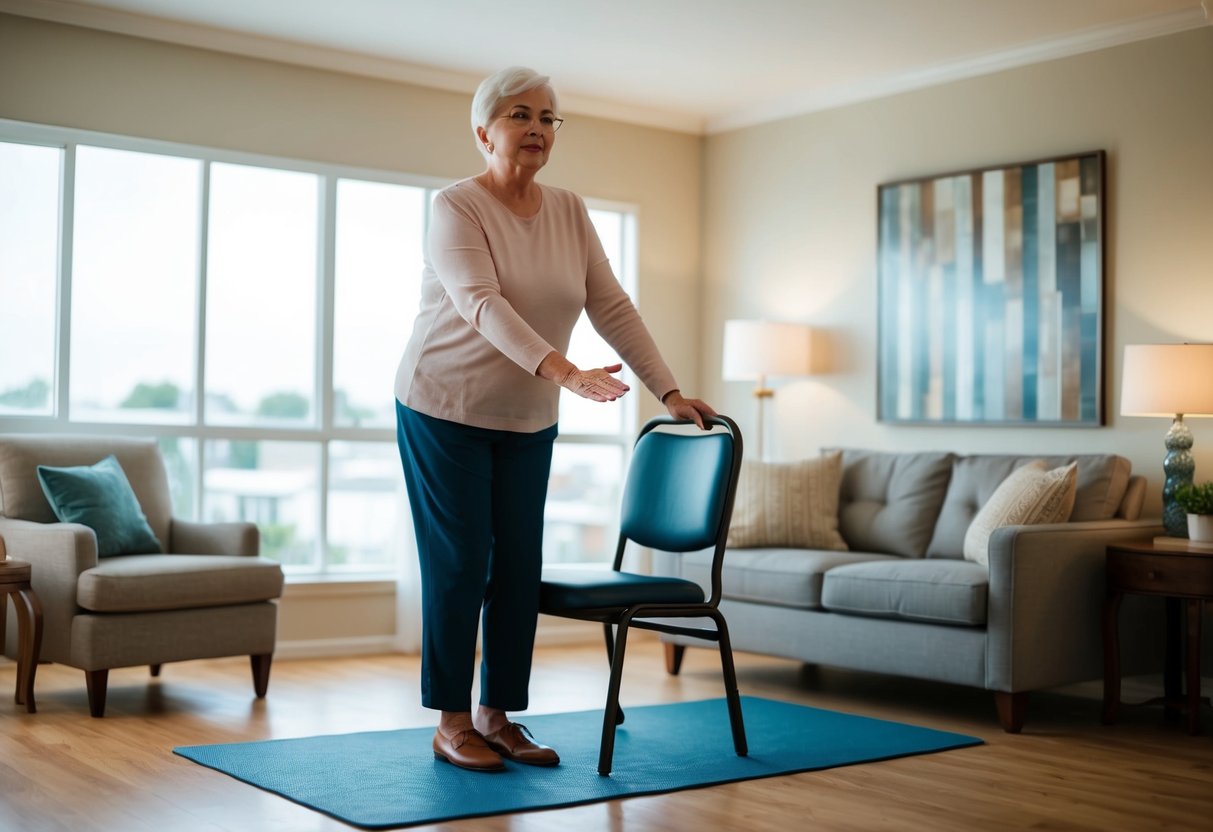
You can easily add balance exercises to your daily routine. This makes it fun and easy to improve your stability.
Try doing heel-to-toe walks while waiting in line at the store. It’s a simple way to work on your balance without anyone noticing.
When brushing your teeth, stand on one leg. Switch legs halfway through to work both sides. Hold onto the sink if you need support.
While watching TV, do some standing marches during commercials. Lift your knees high and keep a steady pace.
Make your walks more challenging by finding uneven surfaces. Walk on grass or gravel paths to engage your balance skills.
Safety is key! Always have a sturdy chair or wall nearby for support. Start slow and build up gradually.
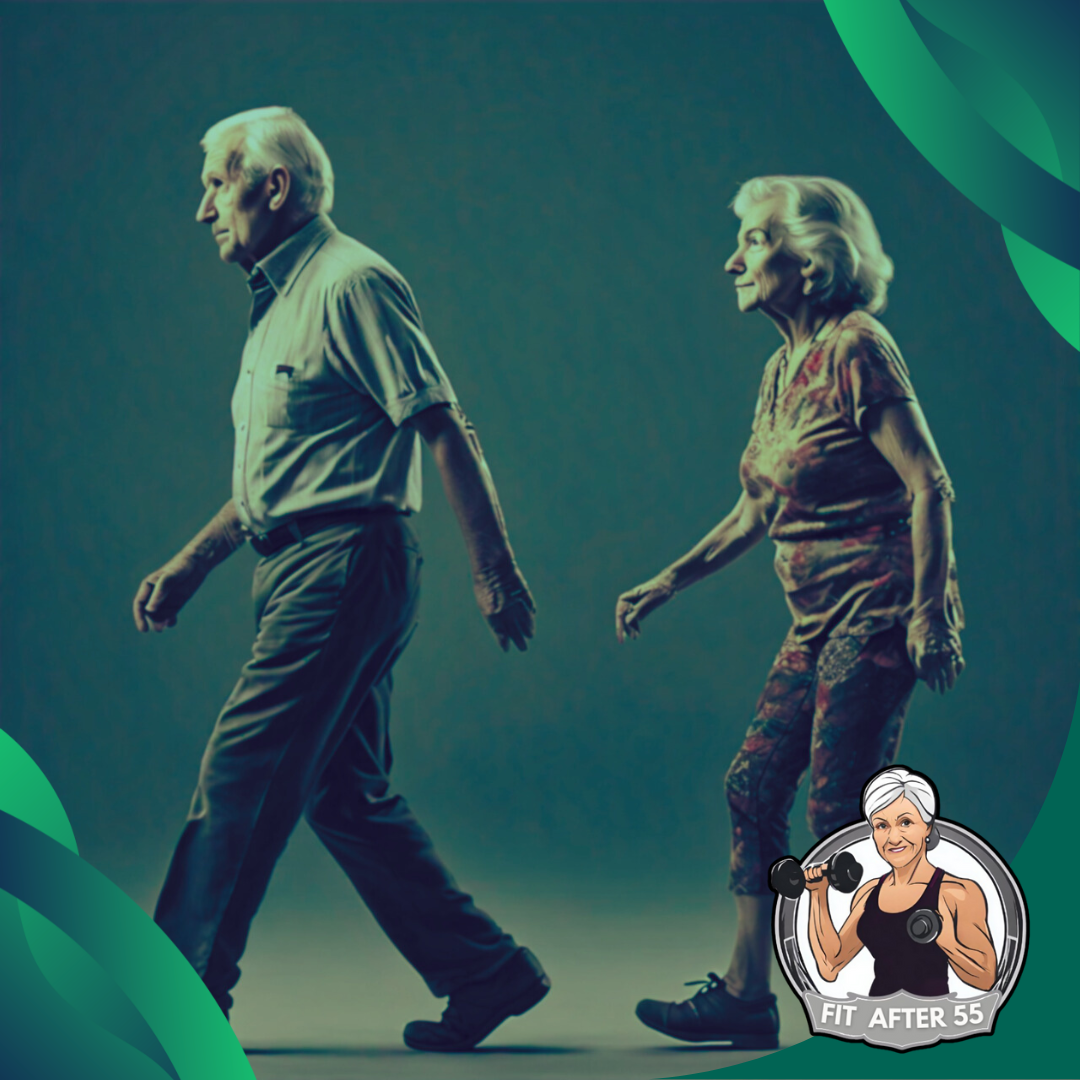
Here’s a quick daily routine you can try:
- Morning: 30 seconds of one-leg stands while making coffee
- Afternoon: 10 heel-to-toe steps while on the phone
- Evening: 1 minute of standing marches during TV time
Remember, consistency is more important than intensity. Even a few minutes each day can make a big difference in your balance and stability.
Advanced Balance Movements

These exercises will challenge your balance and strength. They build on basic movements to help you stay steady on your feet.
Lunges and Squats
Lunges and squats are great for your legs and balance. For lunges, step forward with one foot. Bend both knees to lower your body. Keep your back straight. Push back up to start. Do 10 on each leg.
Squats work your whole lower body. Stand with feet hip-width apart. Bend your knees and lower your body as if sitting in a chair. Keep your chest up. Push through your heels to stand up. Try 10-15 squats.
For both exercises, hold onto a chair if you need help. As you get stronger, try them without support. Go slowly and focus on good form.
Balance Walks
Balance walks help you stay steady while moving. They’re like a tightrope walk. Find a clear path in your home. Walk heel-to-toe in a straight line. Place the heel of one foot directly in front of the toes of your other foot.
Take 10-15 steps forward, then walk backward. Keep your eyes focused on a spot in front of you. This helps you stay balanced. As you improve, try walking on different surfaces like carpet or grass.
For an extra challenge, try raising your arms out to the sides as you walk. This makes the exercise harder and works your core muscles too.
Additional Health Benefits of Balance Activities

Balance exercises offer more than just improved stability. You’ll be happy to know they provide many extra health perks.
Your brain gets a workout too. Balance activities can boost your cognitive function, helping you stay sharp as you age.
These exercises are great for your heart. They get your blood pumping and can improve your cardiovascular health.
If you have arthritis, don’t worry. Balance exercises are often gentle on your joints. They can help ease pain and increase flexibility.
Trying to manage your weight? Balance activities burn calories and can be part of a healthy weight plan.
Your memory might even get better. The focus required for balance exercises can help sharpen your mind.
Here’s a quick list of benefits:
- Better cognitive function
- Improved heart health
- Eased arthritis symptoms
- Weight management
- Enhanced memory
- Light cardio workout
Remember, you don’t need fancy equipment. Many balance exercises can be done at home, making them easy to fit into your daily routine.
By adding balance activities to your exercise plan, you’re giving your body and mind a boost. It’s a simple way to improve your overall health and well-being.
Consulting with Healthcare Professionals

Before starting any new exercise routine, it’s important to talk to your doctor. This is especially true if you have health issues or injuries.
Your doctor can help you figure out which exercises are safe for you. They can also suggest ways to make exercises easier or harder based on your needs.
A physical therapist can create a custom balance program for you. They’ll look at your current fitness level and health to make a plan that works best for you.
When you meet with a healthcare professional, be ready to talk about:
- Your current fitness level
- Any health problems you have
- Medicines you take
- Your goals for improving balance
Remember, it’s okay to ask questions. Your doctor or physical therapist is there to help you stay safe and healthy.
If you feel pain or discomfort during any exercise, stop right away. Let your healthcare provider know about it at your next visit.
By working with professionals, you can find balance exercises that are both safe and effective for you. This teamwork helps you stay active and lower your risk of falls.
Balance Exercises for Seniors at Home: Your Path to a Healthier, Happier You

By incorporating these balance exercises into your daily routine, you’re taking a proactive step towards a healthier, happier future. Remember, as a senior who has personally benefited from these exercises, I can attest to their effectiveness.
Not only will you feel more confident and independent, but you’ll also reduce your risk of falls and improve your overall well-being. Start slowly and gradually increase the intensity and duration of your workouts. Always listen to your body and consult with your healthcare provider before starting any new exercise regimen. With consistent practice and a positive mindset, you can achieve remarkable results and enjoy a more active and fulfilling life.
So, what are you waiting for? Start your balance journey today!
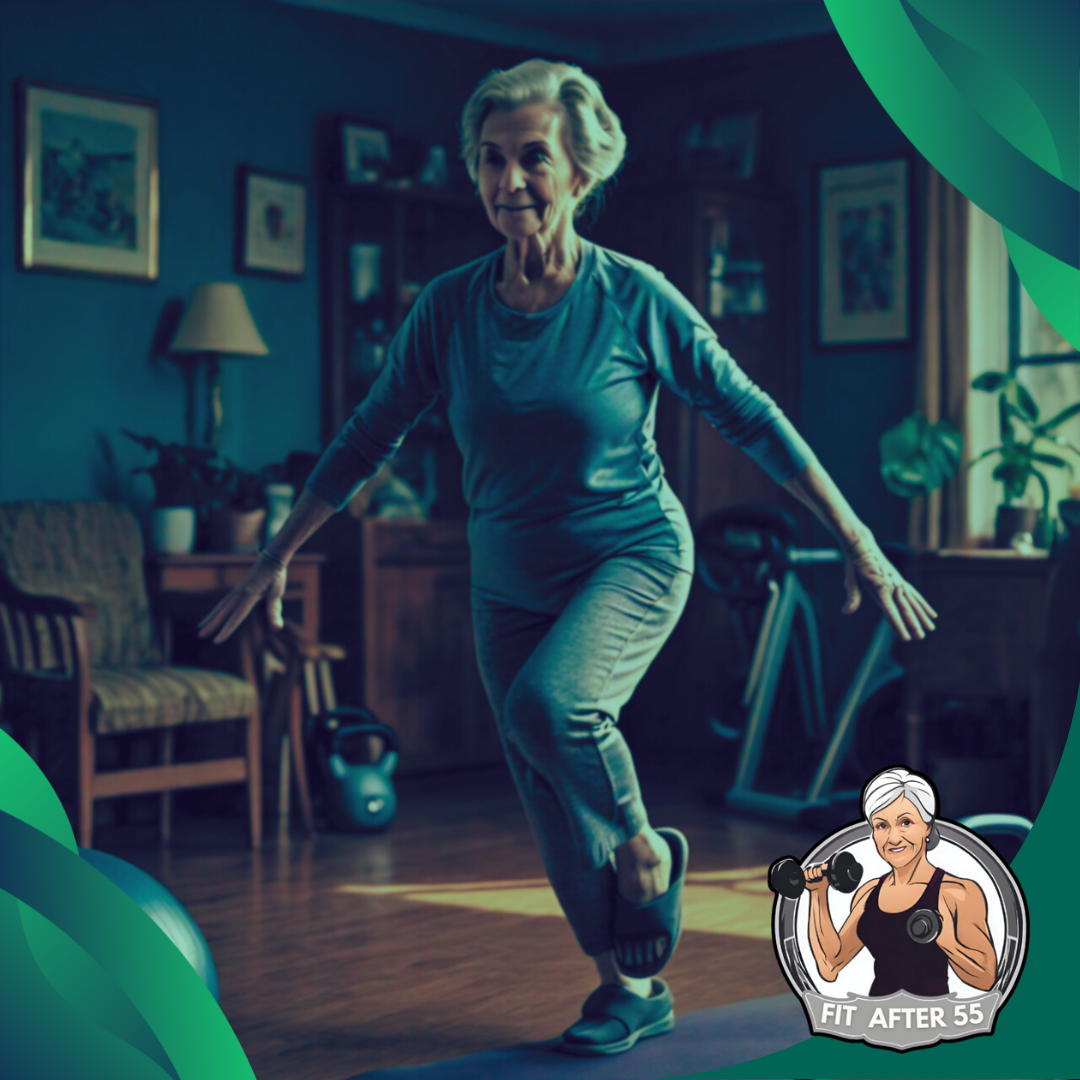
Frequently Asked Questions

Balance exercises help seniors stay active and prevent falls. They can be done at home with little equipment. Here are some common questions about balance exercises for older adults.
What are some simple balance exercises older adults can do at home?
Single-leg stands are easy to do at home. Stand on one foot for 10-15 seconds, then switch sides. Do this 5-10 times per leg.
Weight shifts are another option. Stand with feet hip-width apart. Shift your weight to one side, lifting the other foot slightly. Hold for up to 30 seconds.
How can seniors safely improve their balance with exercises?
Start slowly and use support like a chair or wall if needed. Wear non-slip shoes and clear the area of tripping hazards.
Begin with seated exercises if standing is hard. Gradually increase difficulty as you feel stronger and more stable.
Which balance exercises are most effective for preventing falls in the elderly?
Single-leg hinge to knee raise challenges balance in multiple ways. It works your hips through their full range of motion.
Tandem stance is also effective. Stand with one foot directly in front of the other, like on a tightrope.
What types of balance exercises can seniors do in a small space?
Heel-to-toe walks can be done in a small area. Take 10-20 steps, placing the heel of one foot directly in front of the toes of the other foot.
Sit-to-stand exercises need only a chair. Stand up from a seated position without using your hands, then slowly sit back down.
Can you recommend any easily accessible resources for senior balance exercises?
Your local senior center may offer balance classes or exercise programs. Many libraries have DVDs with guided balance routines for seniors.
Online, the National Institute on Aging provides free balance exercise videos designed for older adults.
How often should seniors perform balance exercises for best results?
Try to do balance exercises 2-3 times per week. Spend about 10-15 minutes on balance training each session.
You can also sprinkle brief balance challenges throughout your day, like standing on one foot while brushing your teeth.
Stay Active, Stay Vibrant: Your Fitness Journey Starts Here!
Looking for ways to stay healthy and strong after 55? Look no further! Visit our website, Fit After 55 (https://fit-after-55.com), for engaging content, insightful product reviews, and a supportive community passionate about fitness at every stage of life.
Connect with us on our Facebook page (https://www.facebook.com/profile.php?id=61557390788711) and join the conversation! Share your experiences, ask questions, and find inspiration from fellow fitness enthusiasts.
Together, let’s make staying active a joyful journey!

